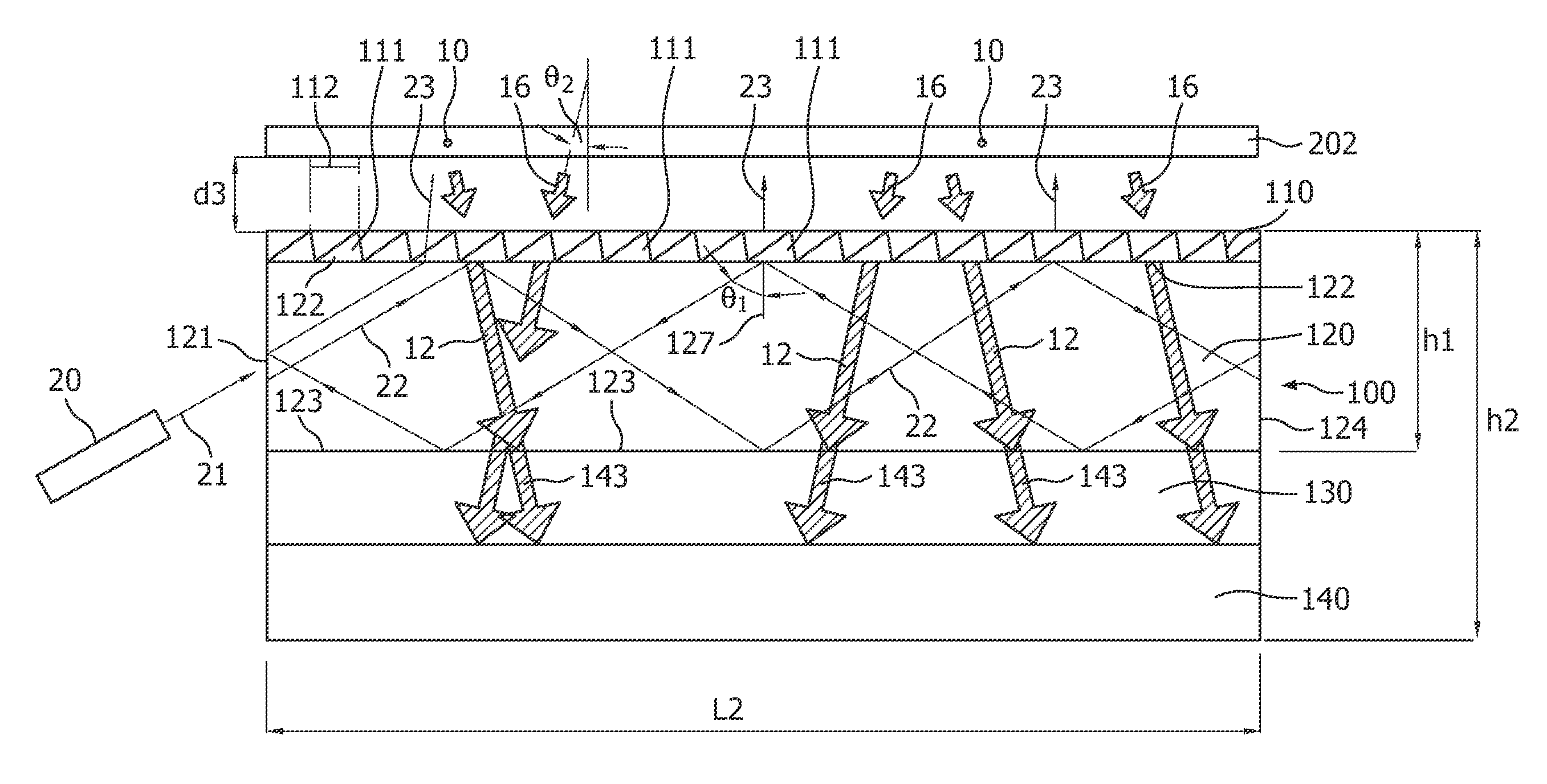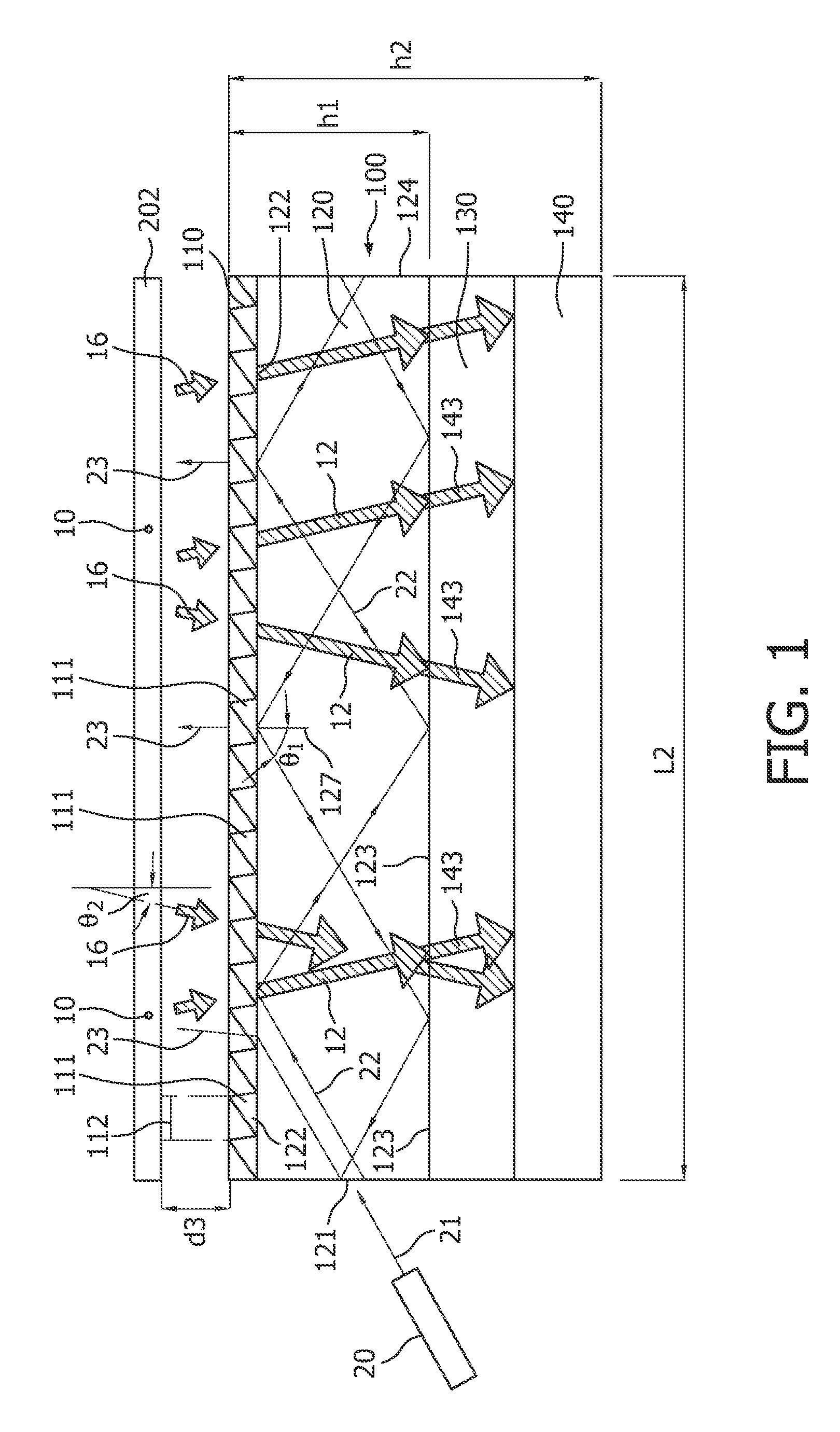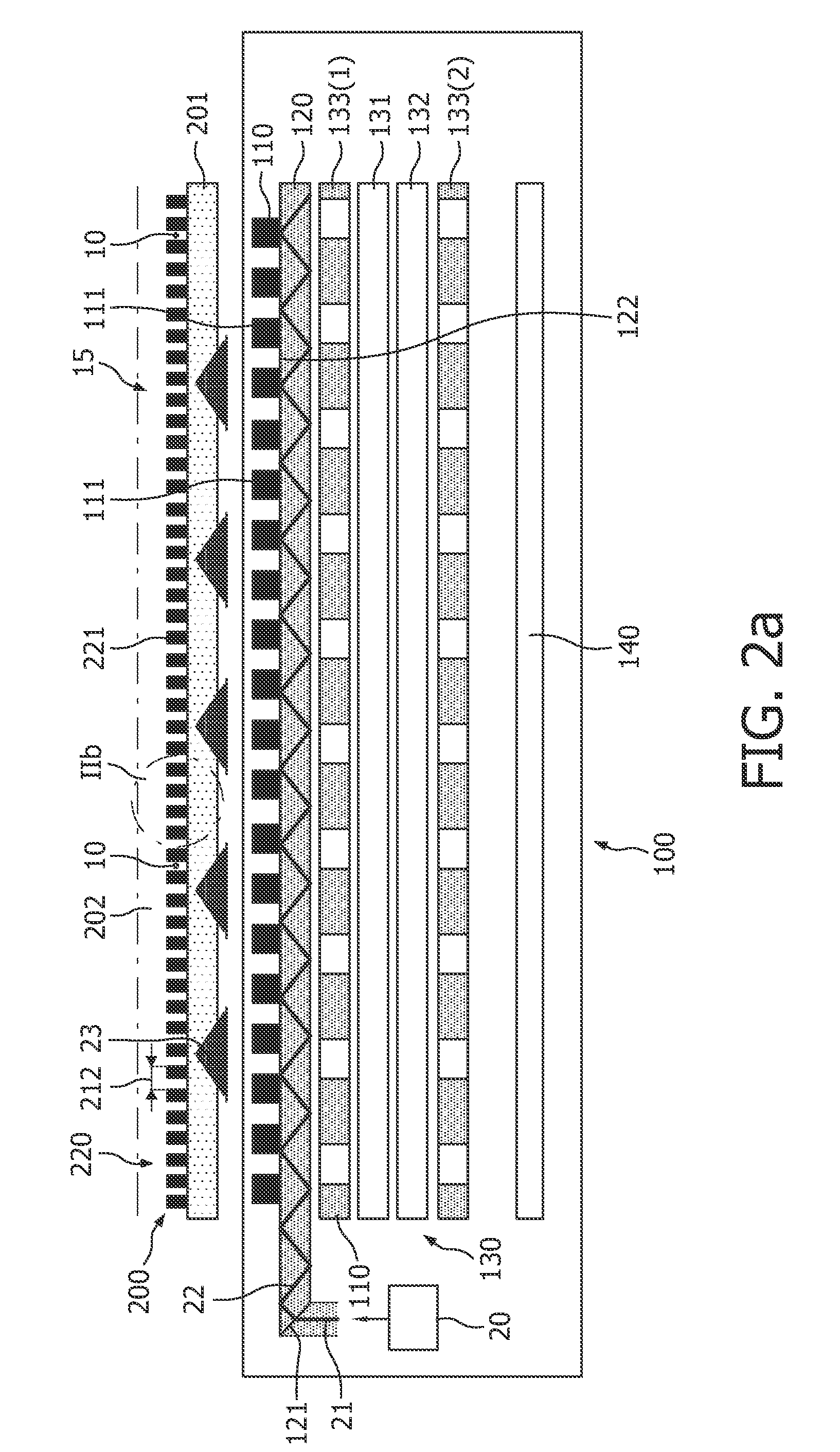Optical sensor for measuring emission light from an analyte
- Summary
- Abstract
- Description
- Claims
- Application Information
AI Technical Summary
Benefits of technology
Problems solved by technology
Method used
Image
Examples
example
[0111]For a number of configurations, the optical properties of the specific optical sensor 100 were determined. For the sake of understanding, an example is given.
[0112]Using rigorous coupled wave calculations, a grating has been designed coupling out light at an excitation wavelength of 650 nm and transmitting light at an emission wavelength of 715 nm (10% red shift). A grating pitch of 450 nm has been used, the periodic structures having a saw-tooth (blazed) shape with a total height of 420 nm. It appears that for the indicated excitation wavelength around 9% of the light is coupled out in first order, whereas for the emission wavelength a transmission of 100% can be obtained for most entrance angles. For large entrance angles (larger than e.g. 10 degrees) the 0-order diffraction efficiency starts to decrease due to the appearance of higher order diffraction orders.
[0113]The term “substantially” herein, such as in “substantially all emission” or in “substantially consists”, will ...
PUM
| Property | Measurement | Unit |
|---|---|---|
| Nanoscale particle size | aaaaa | aaaaa |
| Wavelength | aaaaa | aaaaa |
| Wavelength | aaaaa | aaaaa |
Abstract
Description
Claims
Application Information
 Login to View More
Login to View More - R&D
- Intellectual Property
- Life Sciences
- Materials
- Tech Scout
- Unparalleled Data Quality
- Higher Quality Content
- 60% Fewer Hallucinations
Browse by: Latest US Patents, China's latest patents, Technical Efficacy Thesaurus, Application Domain, Technology Topic, Popular Technical Reports.
© 2025 PatSnap. All rights reserved.Legal|Privacy policy|Modern Slavery Act Transparency Statement|Sitemap|About US| Contact US: help@patsnap.com



